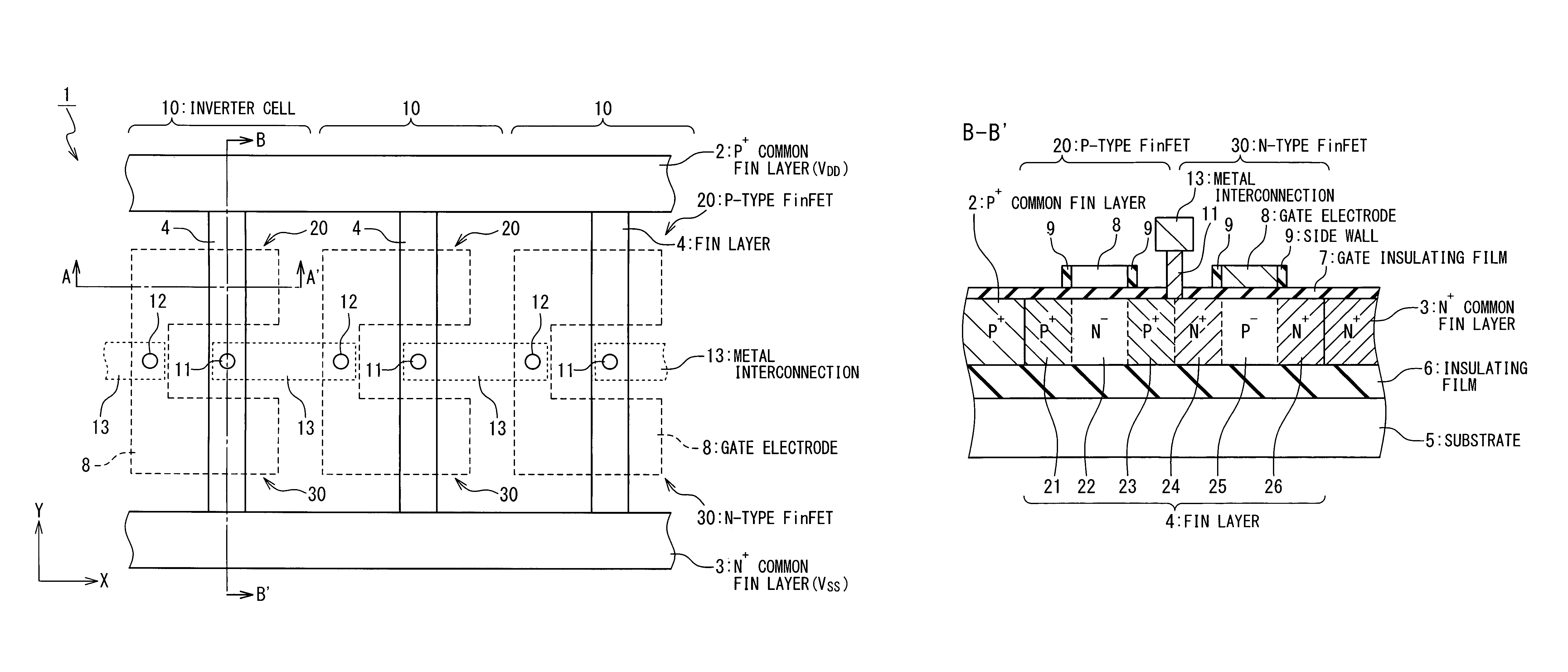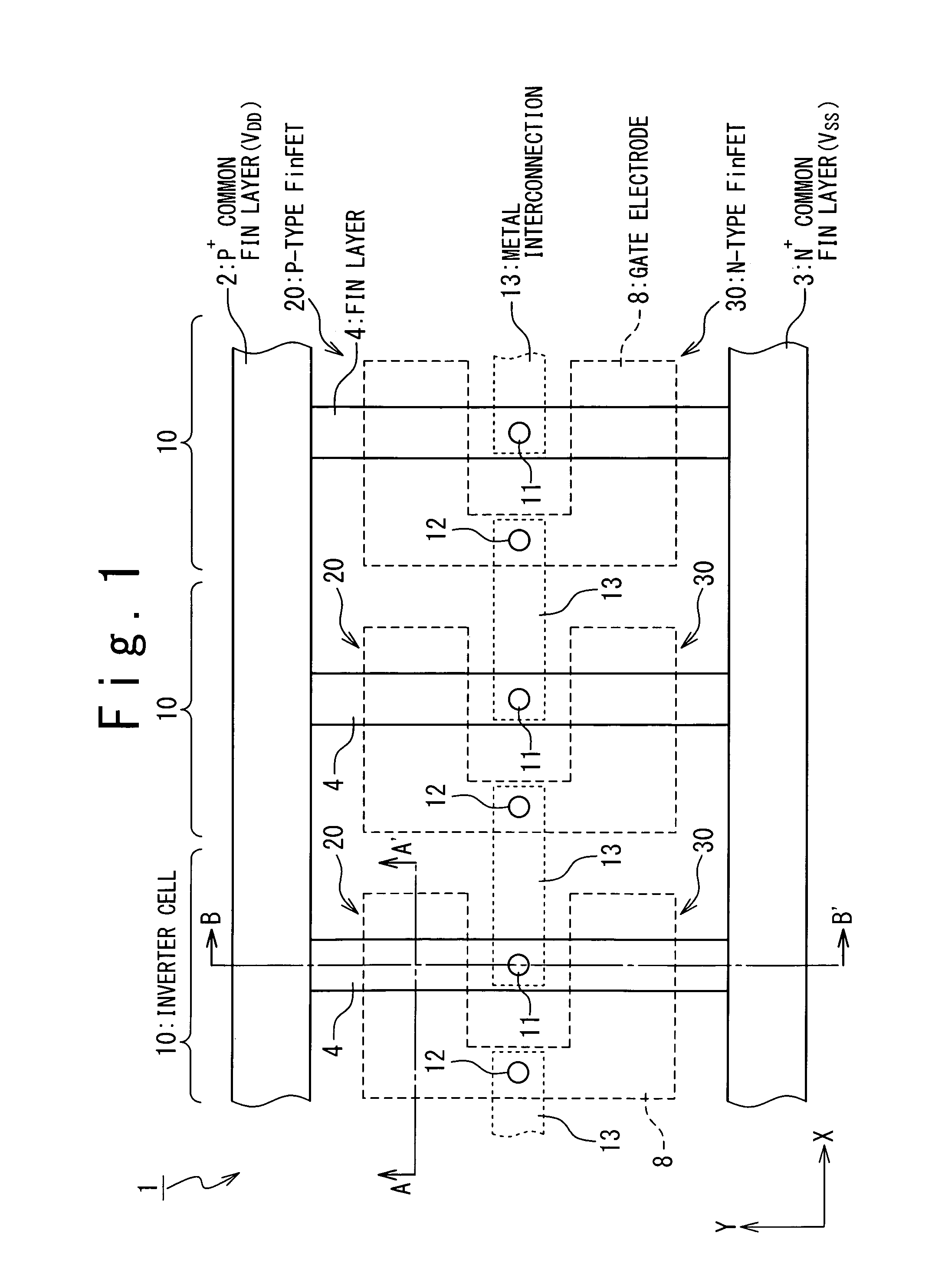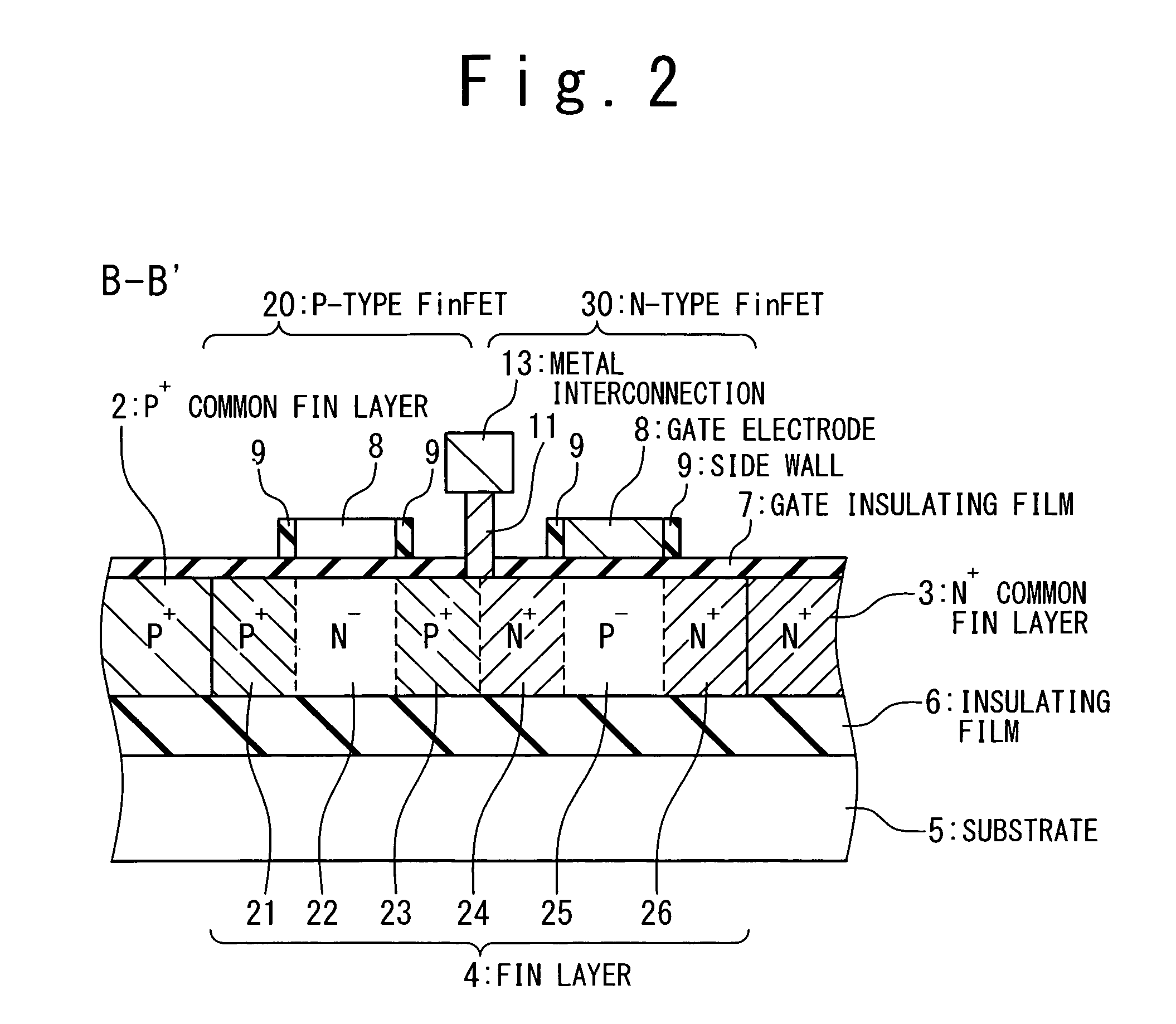Semiconductor device with three-dimensional field effect transistor structure
a three-dimensional structure and transistor technology, applied in the field of semiconductor devices, can solve the problems of insufficient consideration of three-dimensional fet, troublesome heat generation, heat dissipation, etc., and achieve the effect of efficiently dissipating the heat generated in the three-dimensional
- Summary
- Abstract
- Description
- Claims
- Application Information
AI Technical Summary
Benefits of technology
Problems solved by technology
Method used
Image
Examples
first embodiment
[0034]Hereinafter, a FinFET will be used for explanation as a typical example of three-dimensional FET. FIG. 1 is a plan view showing a layout of a semiconductor device 1 according to a first embodiment of the present invention. The semiconductor device 1 in FIG. 1 is formed of serially-connected three-stage inverter circuits 10. Each inverter circuit 10 has a P-type FinFET 20 and an N-type FinFET 30. In the semiconductor device 1 in FIG. 1, inverter circuits 10 are aligned in the X-axis direction and a signal is transmitted in a +X direction. A structure of the semiconductor device 1 will be described in detail below.
[0035]The semiconductor device 1 has a P+ common source semiconductor layer 2 and an N+ common source semiconductor layer 3 which extend in the X-axis direction. Here, the semiconductor layers can also be called as semiconductor blocks. The P+ common source semiconductor layer 2 is a semiconductor layer into which p-type impurities are doped at high concentration and i...
second embodiment
[0050]FIG. 5 is a plan view showing a configuration of a semiconductor device 1A according to a second embodiment of the present invention. Like the semiconductor device 1 of the first embodiment, the semiconductor device 1A of the second embodiment has serially-connected three-stage inverter circuits 10A. However, the shape of the fin layer and the gate electrode in the semiconductor device 1A of the second embodiment is different from those of the semiconductor device 1 of the first embodiment. In the first embodiment, the fin layer 4 is formed linearly along the Y-axis direction, while, in the second embodiment, a bent fin layer 4A is formed.
[0051]FIG. 6 is a plan view showing a configuration of the fin layer 4A. In the second embodiment, a part of the source region 21, the channel region 22 and a part of the drain region 23 of the P-type FinFET 20 are aligned in the X-axis direction, and a part of the drain region 24, the channel region 25 and a part of the source region 26 of t...
third embodiment
[0053]FIG. 7 is a plan view showing a configuration of a semiconductor device 1B according to a third embodiment. The semiconductor device 1B of the third embodiment functions as a NAND circuit having a P-type FinFETs 20A, 20B and N-type FinFETs 30A, 30B.
[0054]More specifically, the semiconductor device 1B has a fin layer 4B connecting the P+ common source semiconductor layer 2 to the N+ common source semiconductor layer 3. The fin layer 4B is divided into branches. Specifically, the fin layer 4B is formed of a part on which the P-type FinFET 20A is formed, a part on which the P-type FinFET 20B is formed and a part on which the N-type FinFETs 30A, 30B are serially arranged. One end of each of the parts on which P-type FinFETs 20A, 20B are formed is joined to the P+ common source semiconductor layer 2 and the other end of each of the parts is joined to one end of the part on which the N-type FinFETs 30A, 30B are formed. The other end of the part on which the N-type FinFETs 30A, 30B a...
PUM
 Login to View More
Login to View More Abstract
Description
Claims
Application Information
 Login to View More
Login to View More - R&D
- Intellectual Property
- Life Sciences
- Materials
- Tech Scout
- Unparalleled Data Quality
- Higher Quality Content
- 60% Fewer Hallucinations
Browse by: Latest US Patents, China's latest patents, Technical Efficacy Thesaurus, Application Domain, Technology Topic, Popular Technical Reports.
© 2025 PatSnap. All rights reserved.Legal|Privacy policy|Modern Slavery Act Transparency Statement|Sitemap|About US| Contact US: help@patsnap.com



